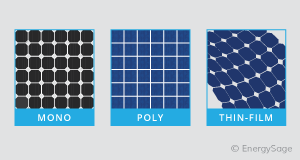leads to lower product cost compared to its counterparts
Solar Cells and Modules Industry
The pandemic has therefore provided an opportune time to step-up the focus on renewable energy. Interestingly, renewable energy has emerged to be the most pandemic resilient energy source. While coal fired power plants suffered from disruptions in coal mining & coal transport, renewables like wind and energy helped mitigate risk of power interruptions. Utility-scale solar has proved its cost resilience during the pandemic at a time when prices of coal-fired power spiked, hit by high fixed costs and low electricity demand. Investments & government funding commitments in renewable energy is poised to grow stronger in the post COVID-19 period.
Solar cells or photovoltaic cells are defined as individual units of small silicon coated plates made of glass, plastic and other materials, which when exposed to sunlight, convert light energy into electricity at the basic atomic level.
The solar cell is chiefly distinguished by its conversion efficiency measured as percentage of incident power translated to power. Silicon solar cells comprise of amorphous, single crystal, and polycrystalline, as well as solar cells made from other materials such as copper indium diselenide, and cadmium telluride.
The world market for solar cells and modules is on a growth path, supported by the growing demand for electricity, rising investments in the renewable energy sector, and favorable government policies globally which are encouraging the deployment of solar-based systems.
Solar Cell Modules Market: Overview
- Solar cell modules can be used individually, or several can be connected to form arrays. They dare typically rated between 50W and 350W. One or more arrays are connected to the electrical grid as part of a complete photovoltaic system.
- Solar cell modules are made from polycrystalline silicon as well as new generations of thin-film solar cell technology. They provide various options to residential, commercial, and industrial sectors to meet their solar energy production requirements.
Key Drivers of Solar Cell Modules Market
- Various policies enacted by governments to support the use of solar systems are anticipated to drive the global solar cell modules market. Implementation of stringent governmental regulations to limit environmental impact is expected to propel the use of renewable energy sources. This is estimated to boost the usage of solar cell modules in solar panels. Various schemes by governments, including tax benefits, subsidies, net metering, financial assistance, and low import duty and feed in tariff, are projected to drive the solar cell modules market.
- Rise in number of residential energy storage systems with solar PV charging panels is driving the solar cell industry. This, in turn, is propelling the solar cell modules market.
- Increase in demand for decentralized energy generation systems in developing countries is likely to augment the penetration of solar energy during the forecast period. More than 1 billion global population has zero or poor access to electricity. Initiatives toward off-grid electrification integrated with solar PV systems are expected boost the solar cell modules market.
Key Market Segment
Silicon wafer segment is expected to hold the large share of the global solar cell modules market, owing to abundant raw material availability and high efficiencies offered vis-à-vis other technologies. The multicrystalline silicon cells segment is expected to expand at a rapid pace due to technological simplicity related to the production process. This leads to lower product cost compared to its counterparts. Increase in demand for multicrystalline silicon cells in residential and commercial applications owing to lower initial investments as well as superior efficiency is projected to drive the demand for multicrystalline silicon cells.


